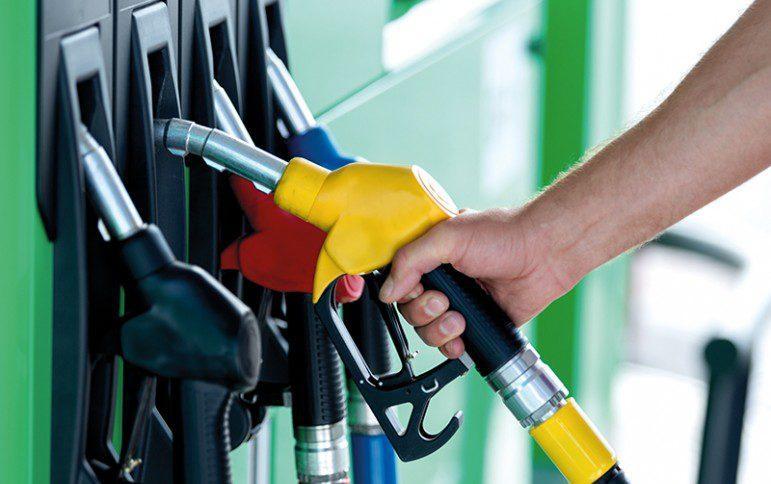Fuel price in Ukraine is influenced by three factors – DiXi Group expert
Ukrainian petrol filling stations have responded to the global trend in the collapse in oil prices only two weeks later
There are three main factors that influence the retail prices of petroleum products: the cost of oil, dollar exchange rate and the balance of the retail market. It is stated in the comment of DiXi Group analytical department trainee Andrii Ursta.
“Pricing in the petroleum product market of Ukraine is an object of close attention of both the consumers and the public authorities. The attention has become even closer amid slumping oil prices caused, on the one hand, by the fall in demand due to quarantine measures in the fight against COVID-19 and, on the other hand – the development of the situation on the world market. The collapse of prices in the crude oil market started on 3-4 March, while the Ukrainian petrol filling stations responded by reducing the prices at the pylons only two weeks later. So far, the trend towards decreasing petrol and diesel fuel prices is preserved. Based on the recommendation of the Antimonopoly Committee of Ukraine (AMCU), we can identify the following major factors that influence the retail prices of petroleum products: cost of oil, dollar exchange rate and the balance of the retail market,” said Ursta.
The expert analysed the impact of each factor on the price of fuel.
“Cost of oil: the attainment of arrangement on the reduction of oil extraction by OPEC+ countries by 10 million barrels per day will undoubtedly stabilize the prices. The question is: will it be for long? According to the forecasts of Goldman Sachs investment bank, such decrease in the offer is not sufficient to exceed the slump in demand and achieve longer-term stabilization of price. At least an additional reduction by 5 million barrels per day will be needed, which may be problematic. Besides, according to the forecasts of the US Energy Information Administration (EIA), the fall in demand will also continue in the second quarter of 2020, while consumption may decrease to 88 million barrels per day. It should be noted that estimates may change very quickly under the influence of the news on coronavirus and related anti-epidemic measures. Continuing transport restrictions and further reducing economic activity in most countries of the world may intensify the expected fall in demand for oil, which will lead to even lower prices. In general, further decrease in the cost of oil is predicted by both Goldman Sachs and the EIA,” noted the expert.
As for the dollar exchange rate, in March, the fall in international stock and commodity markets as well as sentiments on the foreign exchange market of Ukraine caused the devaluation of the hryvnia: compared to February, the average exchange rate of the hryvnia against the dollar have increased by 7.4%, and by the end of March – by 14.3%. The NBU’s exchange rate interventions during this period were able to somehow stabilize the situation, and since early April, the hryvnia started to strengthen.
“Further situation in the foreign exchange market will depend on a number of factors. On the one hand, GDP growth index is important. According to the macroeconomic forecast of the Ministry of Finance updated on 3 April, Ukraine’s GDP will decrease by 4.8% in 2020. According to expectations of the government, inflation, which also affects the exchange rate, will increase to 11.6% (to compare: in March, the NBU reported consumer inflation on the level of 2.3% per year). It is worthwhile noting that macroeconomic forecast of 30 March predicted a GDP fall by only 3, 9%, and the level of inflation – by 8.7%. Within just a few days, the government has significantly worsened expectations regarding the stability of Ukraine’s economy. Such changes are indicative, because they reflect the turbulence of the current economic situation,” told Ursta.
According to the expert, another factor influencing the stability of the foreign exchange market is the success of the government’s anti-crisis measures and the possibility of attracting funds from international financial institutions to finance the public debt (according to the forecasts of the NBU, it will increase from 50% to 60-70% of GDP).
“The expected decisions in this regard are the changes to the state budget, which include, among other things, the creation of a special fund to combat the economic impact of the pandemic and the notorious law on banking regulation, consideration thereof is artificially slowed down by an unprecedented number of submitted amendments. The story with the law on the land market is not finished either: despite the effective voting, the deputies submitted 13 resolutions on its abolition, each of which should be considered,” the expert said.
He points out that one should not also forget the importance of the balance of payments as a factor of influencing the exchange rate.
“Although in February the consolidated balance of payments was surplus and amounted to $ 733 million, but in the future, the value of this indicator will depend on foreign exchange earnings from the main export items of Ukraine – products of ferrous metallurgy and agriculture (mainly grain crops). The market conditions for ferrous metals are generally unfavourable: due to low demand, in April, in a number of regional markets, the price dropped by an average of 20% compared to March. In the grain market, the situation is also unstable: although the price of wheat is recovering after the fall that took place in the late February and the early March, it was facilitated by short-term factors: logistical difficulties as well as possible and actual restrictions on exports by producing countries (in particular, Kazakhstan and Russia). In the short term, the coronavirus pandemic and related measures create incentives for the grain stockpiling by importing countries, which contributes to the growth of demand, however, in the longer term, the economic downturn will reduce consumption,” informed Urst.
The third factor influencing the petrol prices is the balance of the market. The main trend here is the reduction of the capacity of the market due to the cessation of passenger traffic by air and rail, the suspension of work of the public transport and the reduction of private car use.
“This state of affairs increases competition between petrol filling stations operators, who are now forced to cut prices by reducing the margin “corridor”. Also, some experts have noted the resumption of the grey market of petroleum products, which also puts pressure on prices by a cheaper offer. According to them, “mopping up” of illegal petrol filling stations in January was actually levelled,” the expert said.
He expressed an idea that the analysis of these key factors enables to speak about their multiple effects on prices.
“A further fall in demand for oil and a reduction of the retail market of petroleum products will intensify the trend towards the reduction in fuel prices; however, it may be balanced by weakening of hryvnia to dollar exchange rate. At the same time, these factors have one trait in common – the volatility under the influence of an external stimulus (COVID- 19 and the measures to overcome it), which makes long-term forecasts on fuel prices quite problematic,” the expert added.









